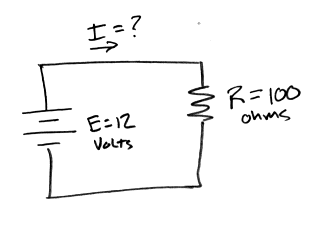Radio Study Guide
Use this guide to study for the simulated amateur license exam. The test will have ten questions. You must score at least 70% correct to pass. You can consult this guide while you take our test (unlike the real exam).1.
Law
Radio signals can travel around the world. To avoid interference, international treaties define when, were and how radio transmitters can be operated. In the United States, the Federal Communications Commission (FCC) regulates transmitters, under direction of the US Congress. Treaties reserve many frequencies for personal, non-commercial, two-way communication.Band: 40 metersNotice that code and voice do not mix together well so separate frequencies are allocated to each.
Use: local by day, long distance at night
Code: 7.000 to 7.150 MHz
Voice: 7.150 to 7.300 MHzBand: 20 meters
Use: long distance by day
Code: 14.000 to 14.150 MHz
Voice: 14.150 to 14.350 MHz
- Transmitter power must not exceed 1000 watts.
- Tall antennas are not allowed near airports.
- Operators must not use bad language.
- Messages cannot be in secret code.
- Amateurs cannot transmit music.
2.
Operating
An amateur license includes a station call sign involving letters and numbers. W1AW is an amateur licence. The W1 means Northeastern United States. So would K1 and a few other prefixes. Some are logical, like J for Japan or F for France."This is K7XYZ", orIn the second case, the station, K7XYZ, is also identifying the station that it is communicating with, W1ABC. Amateurs looking for someone to talk to will use the abbreviation "CQ" to mean "calling anyone". They will say:
"W1ABC this is K7XYZ"
"CQ CQ CQ this is K7XYZ K7XYZ K7XYZ"repeating themselves for clarity.
QTH means location, as in "what is your QTH?".
QSY means change frequency, as in "let's QSY up 5 KHz".
QRX means stand by, as in "QRX one minute".
QSL means received ok, as in "QSL your last message".
3.
Theory
Amateurs can build transmitters from parts and transmit with them without asking for special permission. (All other transmitters, be they cell phones or tv stations, must have their designs "type approved" by the FCC.) Consequently amateurs must know some theory to keep their stations working well.L = 300 / F or F = 300 / LTry this formula with the band frequencies from section 1. Can you see why they call the 7.000 to 7.300 MHz band 40 meters?
To send more complex signals, live voice, we need to continuously modulate
some property of the wave. These are common choices:
All of these and variations are in use in the amateur bands. Transmitting and receiving circuits vary with each mode, as do their sensitivity to noise and interference.unmodulated wave
amplitude modulated
frequency modulated
phase modulated
A complete picture is called a schematic. The components of a circuit are often named, and sometimes values are given for their properties.
- Electrical potential E drives a current I through a resistance R. The more current you want, or the more resistance you have, the more potential you'll need to get it. We can say this with the formula:
- Also, the power P delivered from/to an element increases with both potential E and current I at that element. Again, using formulas:
E = I R or I = E / R
P = I E or P = I 2 R
Here is a circuit where a 12 volt battery drives a current through
a 100 ohm resister. Wonder how much current circulates around this loop?

First we will figure out how much current actually flows in this circuit.
Then we will use that result to figure out how much power the battery will
deliver to the resistor in the process.
We can find the current flowing in the loop by plugging these known quantities into our first formula:
E = 12, R = 100therefore:
I = E / R = 12 / 100 = .12 ampsThen we can use this result in the formula for power:
P = I E = .12 x 12 = 1.44 wattsThe battery delivers 1.44 watts of power to the resistor. This will continue until some circuit parameter changes, such as the battery running down (E < 12 volts), or the resister overheats, or even burns up (R >> 100 ohms). Overheating is a consideration. Normal resistors are only designed to dissipate 1/4 watt.
4.
Safety
This brings us to the issue of safety. We should be careful to not build circuits that catch on fire. It has happened, but it is probably not one of the biggest risks amateur radio operators face. The real risks are:- Shocks
- Falls
